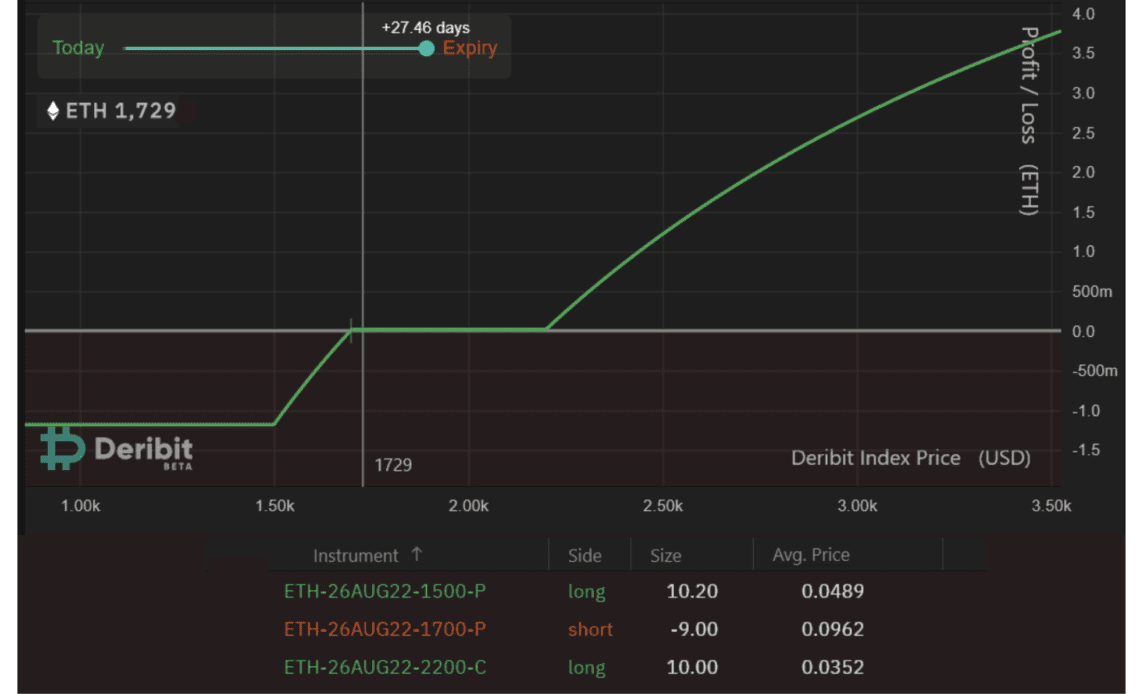Ether (ETH) is reaching a make-it or break-it point as the network moves away from proof-of-work (PoW) mining. Unfortunately, many novice traders tend to miss the mark when creating strategies to maximize gains on potential positive developments.
For example, buying ETH derivatives contracts is a cheap and easy mechanism to maximize gains. The perpetual futures are often used to leverage positions, and one can easily increase profits five-fold.
So why not use inverse swaps? The main reason is the threat of forced liquidation. If the price of ETH drops 19% from the entry point, the leveraged buyer loses the entire investment.
The main problem is Ether’s volatility and its strong price fluctuations. For example, since July 2021, ETH price crashed 19% from its starting point within 20 days in 118 out of 365 days. This means that any 5x leverage long position will have been forcefully terminated.
How pro traders play the “risk reversal” options strategy
Despite the consensus that crypto derivatives are mainly used for gambling and excessive leverage, these instruments were initially designed for hedging.
Options trading presents opportunities for investors to protect their positions from steep price drops and even profit from increased volatility. These more advanced investment strategies usually involve more than one instrument and are commonly known as “structures.”
Investors rely on the “risk reversal” options strategy to hedge losses from unexpected price swings. The holder benefits from being long on the call (buy) options, but the cost for those is covered by selling a put (sell) option. In short, this setup eliminates the risk of ETH trading sideways but it does carry a moderate loss if the asset trades down.
The above trade focuses exclusively on the Aug. 26 options, but investors will find similar patterns using different maturities. Ether was trading at $1,729 when the pricing took place.
First, the trader needs to buy protection from a downside move by buying 10.2 ETH put (sell) $1,500 options contracts. Then, the trader will sell 9 ETH put (sell) $1,700 options contracts to net the returns above this level. Finally, the trader should buy 10 call (buy) $2,200 options contracts for positive price exposure.
It is important to remember that all options have a set expiry date, so the asset’s price appreciation must happen during the defined period.
Investors are protected from a price drop below…
Click Here to Read the Full Original Article at Cointelegraph.com News…
























